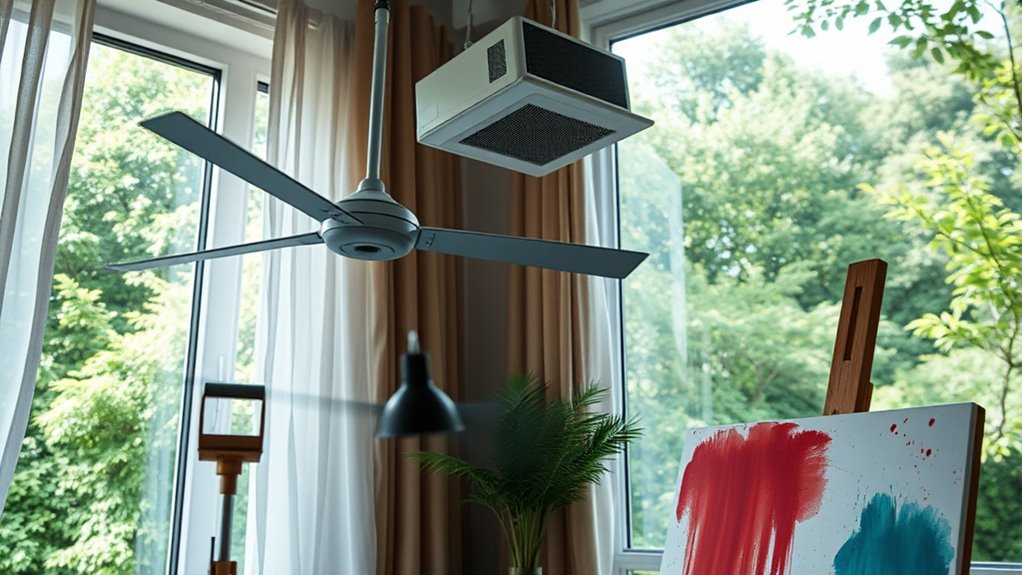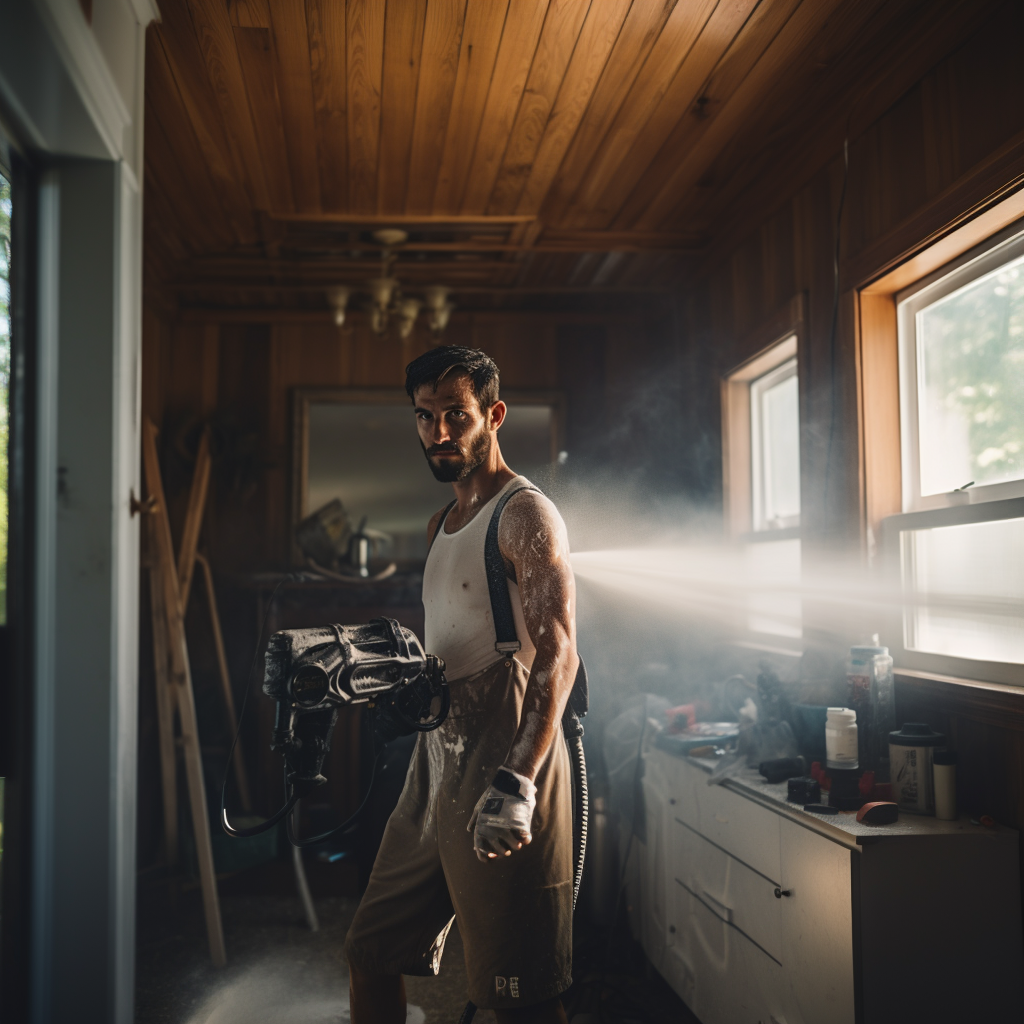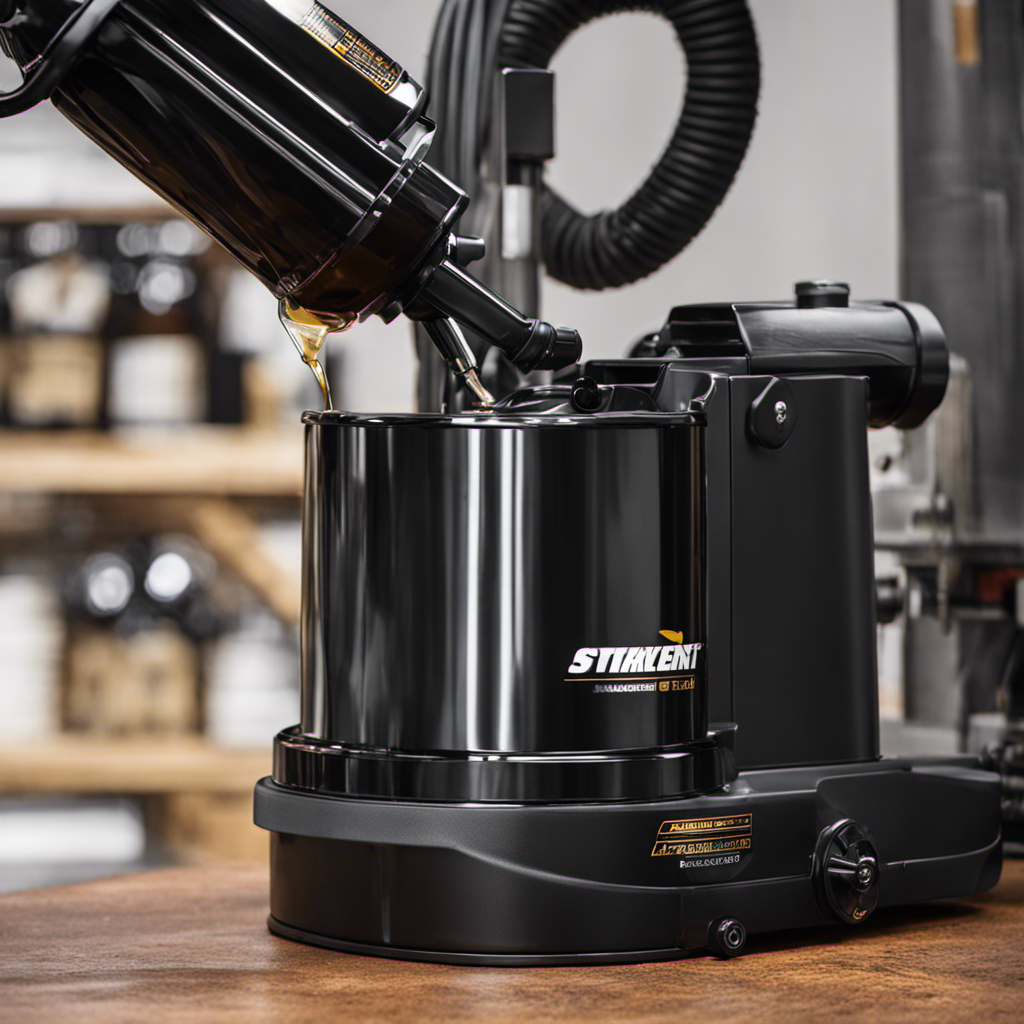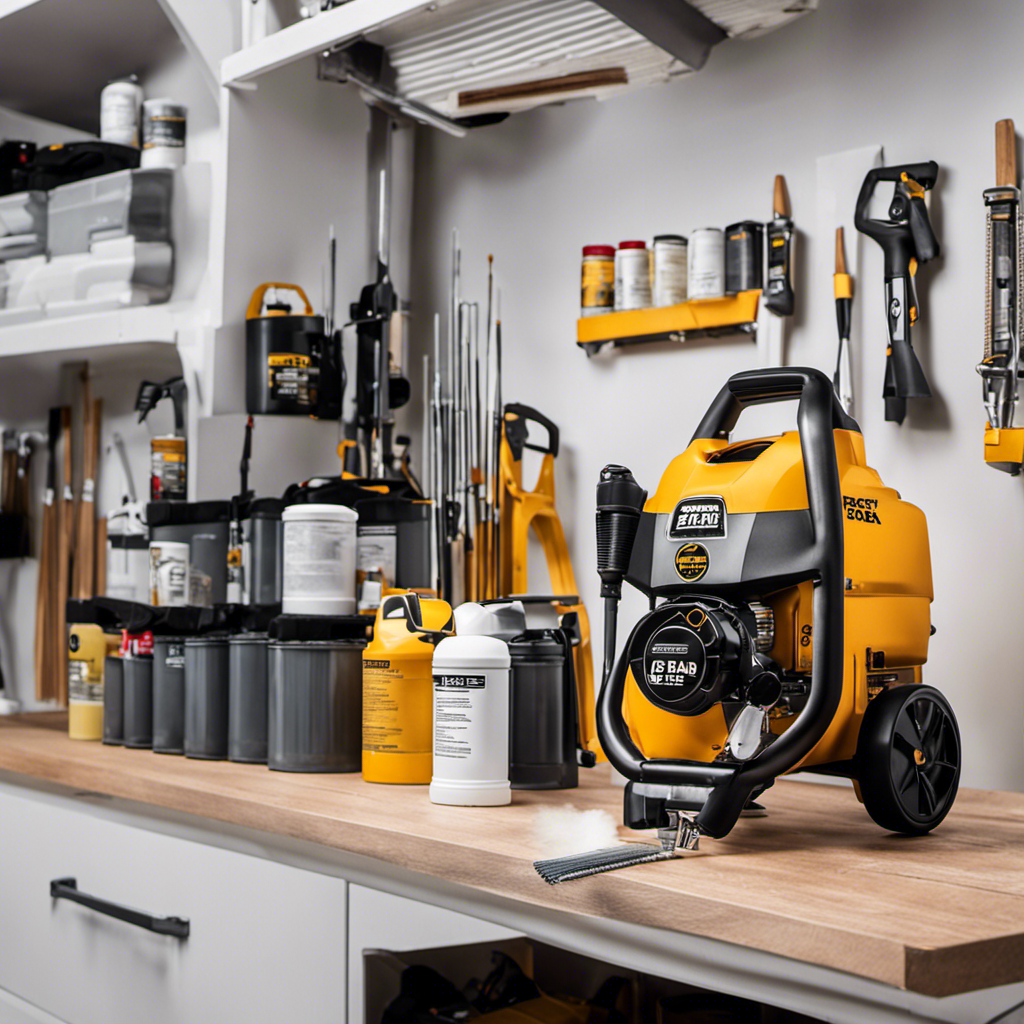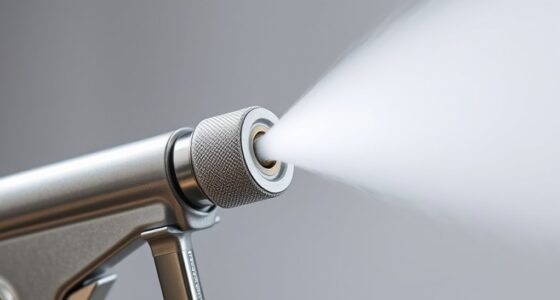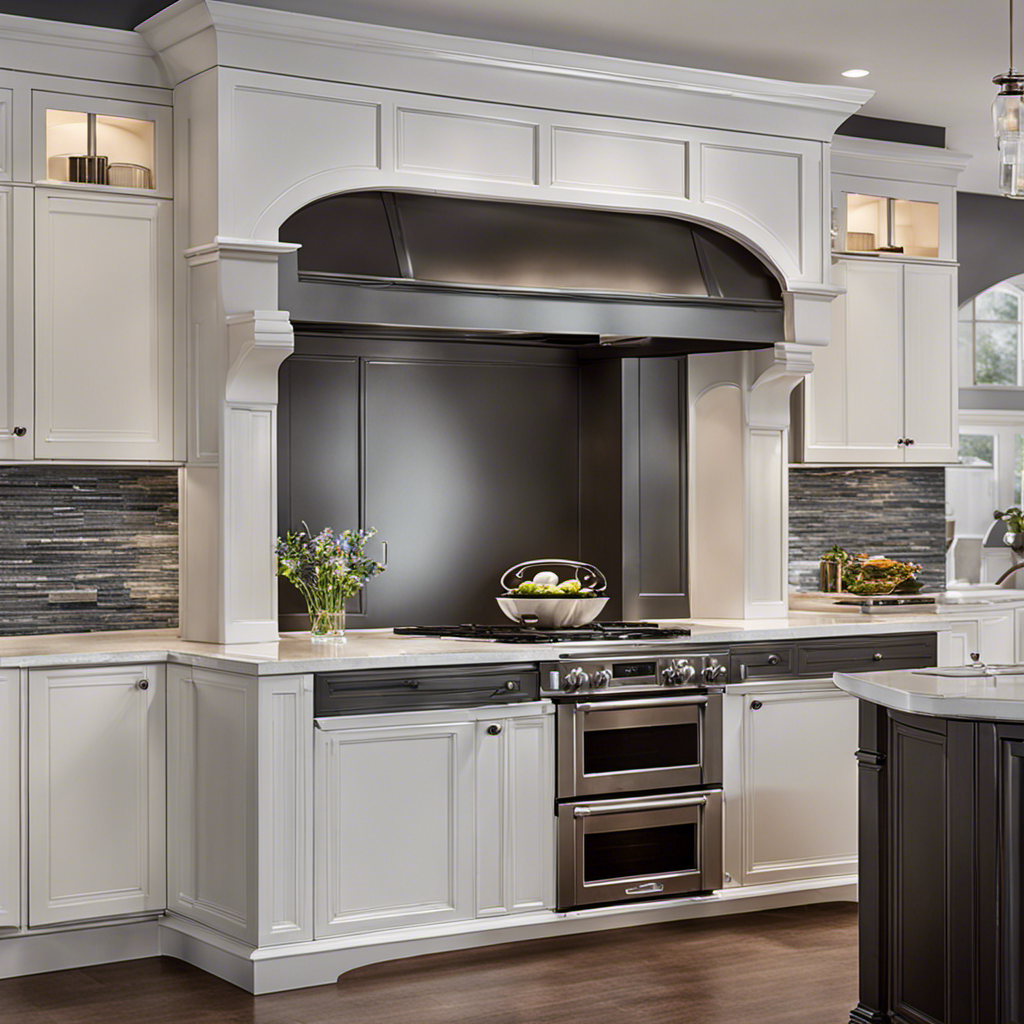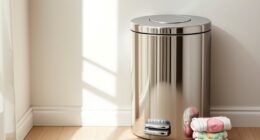To minimize spray paint fumes and reduce smells, you should guarantee proper ventilation in your workspace. Open windows and doors to create cross-ventilation, and use fans to direct fumes outside. Wearing a properly fitted VOC-filtering mask protects your lungs. Adding an air purifier with activated carbon filters also helps trap harmful particles. Scheduling your work during windy conditions further disperses fumes outdoors. Keep these tips in mind to make your project safer—more helpful details await if you continue.
Key Takeaways
- Ensure proper cross-ventilation by opening windows and doors during and after spraying.
- Use fans to direct fumes outside, enhancing airflow and reducing indoor fume buildup.
- Position air purifiers with activated carbon filters near the spray area to absorb VOCs and odors.
- Schedule spray painting during windy conditions to naturally disperse fumes outdoors.
- Wear VOC-rated respirators and replace filters regularly for added protection against fumes.
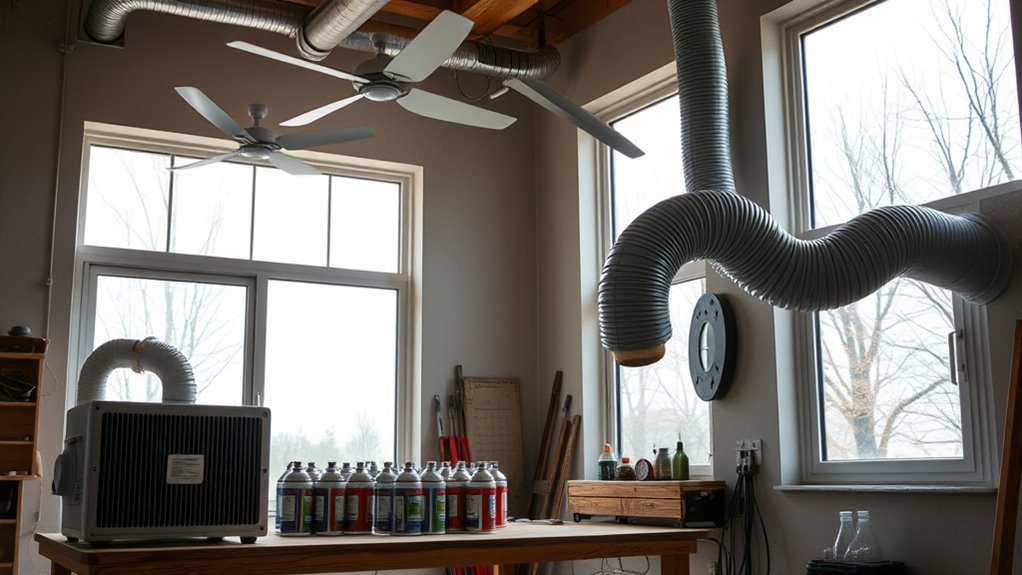
Spray painting can produce harmful fumes that pose health risks if not properly ventilated. When you’re working with spray paint, the fumes released contain volatile organic compounds (VOCs) that can irritate your eyes, throat, and lungs. To minimize these dangers, it’s essential to set up a well-ventilated workspace. Using an air purifier equipped with activated carbon filters can considerably reduce airborne paint fumes, helping to keep the air cleaner and safer to breathe. An air purifier works by continuously drawing in contaminated air and trapping harmful particles, which lessens the intensity of paint smells and reduces your exposure to toxic VOCs. Keep the purifier running throughout your project, and position it close to the spray area for maximum effectiveness.
In addition to relying on an air purifier, mask protection is critical. A proper mask, such as a respirator designed for fumes and particulates, offers a physical barrier against inhaling harmful paint vapors. Avoid using simple dust masks, which don’t provide enough filtration; instead, opt for a mask with a respirator cartridge that specifically filters out VOCs. When you wear a mask protection properly, it prevents the fumes from entering your lungs directly, reducing the risk of respiratory irritation or long-term health issues. Always ensure your mask fits snugly against your face, with no gaps, and replace filters as recommended by the manufacturer.
Creating good airflow in your workspace also plays an essential role. Open windows and doors to encourage cross-ventilation, which helps dilute and carry away fumes. If natural ventilation isn’t enough, set up fans to direct air out of the workspace and away from you. Positioning a fan to blow fumes outside ensures that the contaminated air doesn’t linger in the room, decreasing the smell and reducing inhalation risks. Remember, the goal is to keep fresh air circulating and to prevent fumes from building up. Additionally, understanding the performance kits available for various Honda models can help you choose the most effective modifications to improve your vehicle’s handling and reduce additional environmental impact during tuning projects.
Finally, plan your spray painting sessions during times when outdoor conditions are favorable, such as on breezy days or when wind is blowing away from your home or workspace. This further helps in dispersing fumes away from indoor areas. Combining these measures—using an air purifier, wearing proper mask protection, enhancing ventilation, and timing your work outdoors—helps to create a safer environment. By taking these steps, you reduce both the smell of spray paint fumes and your health risks, making your project safer and more comfortable.
Frequently Asked Questions
Can Natural Ventilation Completely Eliminate Spray Paint Fumes?
Natural ventilation can’t completely eliminate spray paint fumes, but it considerably improves indoor air quality by promoting air exchange. You can help reduce fumes absorption by opening windows and doors to create a steady airflow. Keep in mind, relying solely on natural ventilation may not remove all harmful particles, especially in poorly ventilated spaces. For best results, combine natural airflow with other ventilation methods to ensure safer, cleaner air while painting.
Are There Specific Ventilation Systems Best Suited for Spray Painting?
Imagine you’re a modern-day Da Vinci. For spray painting, you should choose ventilation systems with strong exhaust fans and air filtration. These systems effectively remove fumes and odors, making your workspace safer. Look for setups that include high-capacity exhaust fans and HEPA filters, which trap harmful particles. Properly designed ventilation maintains fumes at bay and ensures fresh air, so your creative process stays safe and enjoyable.
How Long Should I Ventilate After Spray Painting?
You should ventilate for at least 24 hours after spray painting to guarantee good air quality and odor control. Open windows and use fans to increase airflow, helping fumes dissipate quickly. If you’re working in a smaller space, consider running a commercial air purifier with activated carbon filters. This helps remove lingering odors and harmful particles, ensuring your environment stays safe and fresh even after the initial paint fumes have cleared.
Can Wearing Masks Replace Proper Ventilation?
While masks can protect you from inhaling spray paint fumes, they shouldn’t replace proper ventilation. Masks, especially those with limited filter effectiveness, can’t eliminate all harmful particles or odors. Ventilation actively disperses fumes and reduces overall concentration in the air. So, for best safety, you should combine wearing masks with good ventilation, because ventilation is more effective at removing fumes than relying solely on masks.
Is It Safe to Spray Paint Indoors Without Any Ventilation?
Imagine trying to breathe underwater without gear—that’s what spray painting indoors without ventilation feels like. It’s unsafe because indoor safety relies on proper airflow to reduce fume exposure. Without ventilation, harmful fumes can build up quickly, risking health issues like dizziness or respiratory problems. Always open windows or use fans to guarantee good airflow. Spray painting without proper ventilation is dangerous and should be avoided to protect your health.
Conclusion
By ventilating your space, you clear out spray paint fumes and welcome fresh air. While the fumes linger like an unwelcome guest, proper ventilation acts as a friendly host, inviting comfort and safety. Think of it as trading the stale scent for a breath of crisp outdoor air. In balancing these moments, you transform a potentially toxic task into a safer, more pleasant experience—making every spray a step toward cleaner, fresher surroundings.
Franz came aboard the Paint Sprayer Zone team with a background in both journalism and home renovation. His articulate writing style, combined with a passion for DIY projects, makes him an invaluable asset. Franz has a knack for breaking down technical jargon into easy-to-understand content, ensuring that even the most novice of readers can grasp the complexities of paint sprayers.
